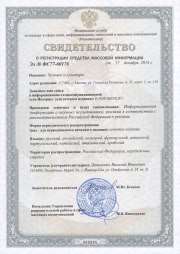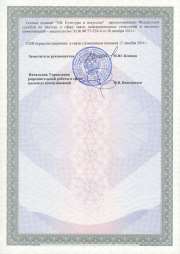|
MAIN PAGE
> Back to contents
Man and Culture
Reference:
Khabibullina Z.R.
The practices of implementation of digital technologies in Islamic society (on the example of Hajj)
// Man and Culture.
2019. № 6.
P. 54-58.
DOI: 10.25136/2409-8744.2019.6.31773 URL: https://en.nbpublish.com/library_read_article.php?id=31773
The practices of implementation of digital technologies in Islamic society (on the example of Hajj)
Khabibullina Zilya Rashitovna
PhD in History
Senior Scientific Associate, R. G. Kuzeev Institute for Ethnological Studies of Ufa Federal Research Center of the Russian Academy of Sciences
450072, Russia, g. Ufa, ul. Karla Marksa, 6

|
zilyahabibi@mail.ru
|
|
 |
Other publications by this author
|
|
|
DOI: 10.25136/2409-8744.2019.6.31773
Received:
13-12-2019
Published:
20-12-2019
Abstract:
This article is dedicated to the problem of innovativeness of traditional religions and their compatibility with the technological novelties. On the example of Hajj – one of the major Islamic rituals, the author examines the use of digital technologies in realization of the annual pilgrimage of the Muslims. Emphasis is made on studying the process of using the Hajj-related mobile applications that allow the believers and nonbelievers to connect with the religious action in the virtual space. Mobile interface allows each user to receive information on religion, sacred texts, stamping grounds, as well as contains theological interpretation of the rituals, audio and visual content. The research was carried out in the Islamic segment of Internet; the author conducted content analysis of the information and discussion content pertinent to Hajj. The acquired results testify to the expansion of virtualization of Islam along with the use of digital technologies in the conservative religious field. The popularity of digital images, social networks, “virtual Hajj” among the Internet users contribute to the increase of communicative and discussion activity in Islamic society with regards to the questions of “veracity” and need for using information technologies by the believers.
Keywords:
Islam, Hajj, Umra, virtualization, digital technology, Mecca, Medina, Muslim, digitalization, Internet
This article written in Russian. You can find original text of the article here
.
Виртуальный мир является неотъемлемой частью жизни современных верующих. Существует масса электронных медиа, созданных мусульманами для распространения новостей, сведений о религиозных понятиях и обрядах; ведут свою деятельность электронные приходы, джамааты, «скайповые» муфтии и шейхи. Ряд религиозных практик, в том числе проведение проповедей, молитв, обрядов, соблюдение поста проходят в режиме онлайн. Оцифрованы места паломничества и значимые для мусульман историко-культурные объекты. Однако многие священнослужители опасаются утраты значимости ритуалов из-за экспансии Интернет-пространства. Например, об этом свидетельствует широко распространенный исламский дискурс о селфи – модном течении, наиболее популярном среди паломников, совершающих хадж. Вопрос «Можно ли делать селфи в хадже?» вызвал массу дискуссий среди мусульман, итогом которых стали поиски божественного обоснования явления и в связи с недостаточностью объяснений в священных текстах, решение принимается в пользу запрета фото и видео вообще.
Хадж как один из пяти столпов ислама предписан к совершению каждому мусульманину, если ему позволяет здоровье и финансовое положение. Побывавший в Мекке паломник вызывает уважение родных и близких, считается, что благословение, которое он привозит с собой, распространяется на всю его семью. Мусульмане рассматривают хадж как путешествие в земном и сакральном смысле, гарантирующее отпущение грехов и достижение вечного блаженства в загробной жизни.
В реализации хаджа, мусульмане всего мира восприняли и активно используют массу новых технологий. Информация о паломничестве представлена практически во всех исламских медиа, на сайтах хадж-миссий, хадж-операторов, исламских интернет-форумах. В социальных сетях образованы самостоятельные группы, посвященные паломничеству. Исследование включало, с одной стороны, мусульманские сообщества, с другой – коммуникативные технологии, представленные в онлайн-режиме.
Использование в исследовании Интернета оказалось наиболее востребовано в изучении именно практики исламского паломничества в связи с тем, что Мекка и Медина являются практически недоступными для традиционных исследований в поле. Существуют конфессиональные ограничения – запрещен въезд на территорию святых мест немусульманам. Саудовскими властями введен запрет на проведение каких-либо исследований в период хаджа, официально запрещена фото и видеосъемка на территории запретной мечети и мечети Пророка в Медине.
В социально-культурной антропологии практикуется изучение явлений, находящихся вне возможности доступа исследователя, когда исследователь не имеет возможности физического присутствия в изучаемом сообществе – это так называемые исследования «на расстоянии» или «дистанционная этнография». Такие исследования практикуют, например, изучение политических или этнических конфликтов, затрудняющих легальное присутствие антрополога [4].
Хорошим подспорьем в таком случае являются цифровые медиа технологии, они позволяют проводить исследования на расстоянии, упрощая дистанционный разрыв исследователя с объектом исследования. В настоящее время, западными специалистами широко разрабатываются методы по использованию социальных сетей «для дистанционного изучения офлайн социальных явлений». В этом ключе интересны работы Хайн, Мархам, Пинка, Хорста и других [1–3].
Виртуальное пространство открывает доступ к массе информации, касающейся хаджа у разных народов. Вопросы хаджа пристально освещаются в месяц зуль-хиджа (в сезон хаджа), это самое подходящее время для кибер-исследования паломничества. В месяц хаджа происходит самоорганизация мусульман не только в реальной жизни, но и онлайн. Хадж проецируется в Интернете через социальные сети, блоги, онлайн-СМИ, аудио- и видео материалы, фото. Участвуя в кибер-дискуссиях по вопросам хаджа, просматривая аудио и видео, мусульмане, не совершающие паломничество приобщаются к нему онлайн. Использование новых технологий позволяет верующим чувствовать себя гораздо более связанными, несмотря на то, что они могут быть физически разделены.
Популярность Интернета и особенно смартфонов, дополняя физическую подвижность, способствует к потере значимости расстояния и местоположения. Местом коммуникации и обменом опыта мусульманских паломников становятся преимущественно социальные сети. В Интернете группы хаджа создаются по региональному признаку: Хадж мусульман Татарстана, Башкортостана, Екатеринбурга, Волгограда, Дагестана, Казахстана, Киргизии и т.д.; по принадлежности приходов к духовным организациям: хадж мусульман Центрального духовного управления мусульман, Совета муфтиев России, Духовного управления мусульман Дагестана; по хронологическому порядку: хадж 2012, хадж 2013 и т.д. по годам. Существующие онлайн-группы хаджа по праву можно назвать цифровыми медиа-культурами, так как формируются они небольшими сообществами по всему миру.
На базе мобильных приложений существует масса различных программ, предлагающих совершить «виртуальное паломничество» и обряды хаджа в киберпространстве.
- «Ал-хадж ал-мабрур» («Одобренный хадж») – разработано в Министерстве хаджа СА как единственное «правильное восприятие ислама» в век распространения экстремистских идеологий. Функционирует на 3-х языках, урду, английском и хинди.
- «Манасикана» («Наши обряды») включает в себя карты Мекки, Медины, Джидды и мест паломничества, а также ссылки с полезной информацией. Поддерживает семь языков: арабский, английский, французский, урду, турецкий, малайский и бенгальский.
- «Hajj-Umrah Guide» пошаговое руководство по хаджу и умре на английском языке, с молениями на арабском языке и визуальным сопровождением .
- Российские туроператоры разработали приложение «Паломник», в котором содержится общая информация программы тура по дням, указаны дни пребывания в Мекке и Медине, дни переездов/перелетов, даты экскурсий, почасовой распорядок дня в соответствии с программой тура, время намазов.
- Одно из самых интересных мобильных приложений «Мекка 3D», с помощью которого любой житель земного жара может побывать в святых местах и совершить «виртуальный хадж» [6].
Мобильные приложения хаджа нацелены на решение образовательных задач (содержат подробное описание обрядов и фото мест поколения); просветительских (электронные приложения позволяют не мусульманам «посетить» святые места ислама и познакомиться с вероучением); Регламентирующие (содержат подробное описание обрядов); организационные (позволяют установить регламент посещения святых мест групп мусульман из тех или иных регионов).
Информационные технологии создают определенные удобства при совершении паломничества. Например, можно просить прощения через «Twitter», получать в нем советы от духовных наставников, в режиме реального времени делиться своими переживаниями с друзьями и родственниками через социальные сети, географически ориентироваться в Хиджазе, поддерживать новые знакомства и др. Паломниками активно используется популярный мессенджер «WhatsApp».
Благотворительный проект Исламского банка развития организовал «виртуальное жертвоприношение». За 410 реалов (около 80 евро) на официальном сайте проекта можно купить «виртуального барана» и таким образом совершить обряд жертвоприношения. Стоимость животного оплачивается через Интернет, затем производится его забой в соответствии со всеми предписаниями ислама. Данная услуга доступна для мусульман из любой страны мира в течение всего года. Ярким проявлением виртуализации хаджа является практика круглосуточных цифровых трансляций из Мекки и Медины. Например, среди мусульман России распространена практика ежедневного просмотра таких онлайн-передач. В самой Мекке в гостиницах для паломников демонстрируется круглосуточная видеотрансляция тавафа – семикратного обхода Кааабы. Зачастую паломники там и знакомятся с возможностью приобщения к хаджу через Интернет.
Несмотря на то, что обряды хаджа совершаются с помощью мобильных приложений, продолжает действовать практика подготовки и репетиций хаджа. С развитием Интернета у многих верующих вызывает опасение перемещение религиозных практик, в том числе хаджа, в виртуальное пространство. На протяжении веков священные обряды совершались во время реального путешествия к святыням ислама. Однако современные пользователи сети задаются вопросом: «Есть ли в Исламе религиозные обряды, которые можно совершать виртуально? К примеру, если человек, не располагающий средствами для посещения Мекки, посетит официальный сайт Священной Каaбы с соблюдением при этом аналогов всех предписанных правил, – можно ли считать это хаджем, очистится ли этот человек?» – спрашивают пользователи Интернета [5].
Таким образом, мусульманское сообщество интегрирует имеющиеся и создает новые цифровые продукты для улучшения инфраструктуры хаджа. В то же время роль цифровых технологий в мусульманском сообществе оценивается с двух позиций: 1. Цифровые технологии являются насущной необходимостью в современном обществе; 2. Цифровые технологии способствуют упрощению выполнения священного обряда. Ритуалы хаджа в настоящее время остаются неизменными, однако культура хаджа меняется под влиянием новых технологий. Массовые средства коммуникации с точки зрения духовных деятелей способствуют «банализации» хаджа, утрате его сакрального значения, в некотором смысле постепенному превращению в туристическую поездку, – что совершенно не соответствует ни политике Саудовской Аравии, ни позициям религиозных авторитетов в мусульманских сообществах.
References
1. Hine C. Virtual ethnography. – London: Sage, 2000. – 240 p.
2. Markham A.N. Life Online: Researching real experiences in virtual pace. – Walnut Creek, CA: AltaMira Press, 1998. – 246 p.
3. Pink S., Horst H. Postill J. Digital Ethnography: Principles and Practice. – Los Angeles: Sage Publications Limited, 2016. – 254 p.
4. The Routledge Companion to Digital Ethnography / ed. by L.Hjorth, H. Horst, A. Galloway, G. Bell. – New York: Routledge, Taylor & FrancisGroup, 2017. – 494 p.
5. Goralik L. Akhmad-khadzhi Abdulaev: «Segodnya islamskii mir stoit na poroge poyavle-niya v Shariate novykh adabov». 2011. 03 okt. Islam.ru – islamskii informatsionnyi portal. – Rezhim dostupa: http://islam.ru/content/analitics/30218 (data obrashcheniya: 25.03.2019).
6. Khabibullina Z.R. Selfi v Mekke: kharam ili dostochtimyi khadzh? // Sibirskie istoricheskie issledovaniya. 2019. – № 2. – S. 85-108.
Link to this article
You can simply select and copy link from below text field.
|
|





